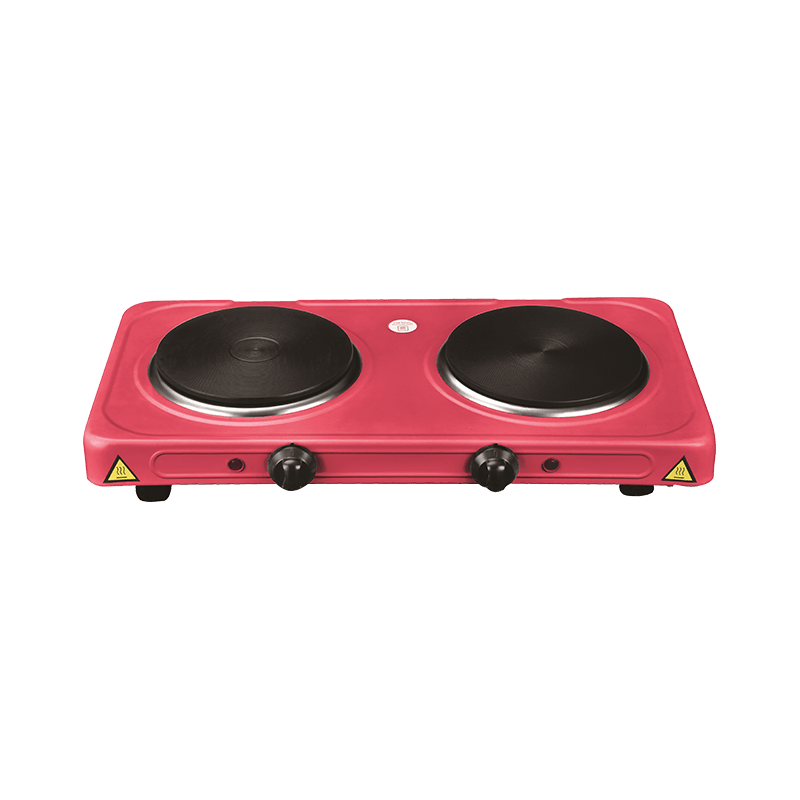Health and environmentally friendly saving single hot plate
Cat:Single Hot Plate
In the realm of sustainable culinary solutions, our company takes pride in presenting our innovative single hot plate, designed to embody the core val...
See DetailsThe Spiral Heating Hot Plate has become a widely used appliance in both kitchens and laboratories due to its simple yet effective heating system. While it may appear to be a straightforward device, the technology behind a Spiral Heating Hot Plate is built on principles of efficient heat transfer, adjustable temperature control, and user-friendly design. To fully appreciate its usefulness, it’s helpful to understand how this device works and what makes it different from other types of hot plates.

At the core of a Spiral Heating Hot Plate is its spiral-shaped metal heating element. This coil, usually made from durable materials like nickel-chromium alloy, converts electrical energy into heat when a current passes through it. The spiral shape increases the surface area of the element, allowing it to generate heat more efficiently while covering a practical area for cooking or heating.
When switched on, the electrical current travels through the coil of the Spiral Heating Hot Plate, causing the metal to resist the flow of electricity. This resistance produces heat, which then radiates outward and transfers directly to the bottom of any cookware placed on it. Since the coil is exposed, heat is delivered with minimal delay, making the Hot Plate a convenient option for users who need quick and consistent warmth.
One of the primary advantages of the Spiral Heating Hot Plate is its ability to deliver adjustable heat levels. Models feature a control knob that adjusts the electrical current passing through the coil. By increasing or decreasing this current, users can easily raise or lower the heat output to suit various cooking or heating tasks. This technology provides flexibility for preparing a wide range of dishes or performing lab experiments that require precise temperature management.
The design of a Spiral Heating Hot Plate also focuses on ease of maintenance and durability. The exposed coil allows users to see the heating element clearly, making it simple to clean the surrounding area. If food or liquids spill over, they usually fall into a drip tray beneath the element. This straightforward setup ensures that the Hot Plate remains functional and safe to use with regular care.
Another important feature of the Spiral Heating Hot Plate is its portability. Thanks to its compact size and lightweight construction, this device can be easily moved or stored when not in use. This flexibility makes it popular in small apartments, outdoor settings, dormitories, and temporary kitchens, where space and permanent fixtures may be limited. The ability to set up and pack away the Hot Plate quickly enhances its practicality in a variety of environments.
Safety considerations are also a part of the technology behind the Spiral Heating Hot Plate. Many models are equipped with overheat protection, which automatically cuts off power if the device reaches unsafe temperatures. Some designs include non-slip feet and insulated handles to reduce the risk of accidents during use. These features ensure that the Hot Plate provides reliable performance while prioritizing user safety.
In addition to everyday kitchen use, the Spiral Heating Hot Plate is commonly found in laboratory settings. In such environments, the ability to heat beakers, flasks, and other containers steadily and evenly is essential. The open-coil design of a Hot Plate ensures efficient heat transfer to a range of materials, making it a dependable choice for tasks like solution preparation, sample warming, and equipment sterilization.
Energy efficiency is another technical advantage of the Spiral Heating Hot Plate. By delivering heat directly through its exposed coil, it reduces heat loss that often occurs in solid-surface hot plates. This focused heating approach ensures that more of the energy consumed is transferred to the cookware or container, supporting faster and more consistent results for short-term tasks.
The materials used in constructing a Spiral Heating Hot Plate are chosen for their durability and resistance to high temperatures. The heating coil, typically made from alloys like nichrome, can withstand repeated cycles of heating and cooling without significant wear. The frame and housing materials are usually made of metal or heat-resistant plastics, providing additional protection and structural stability.